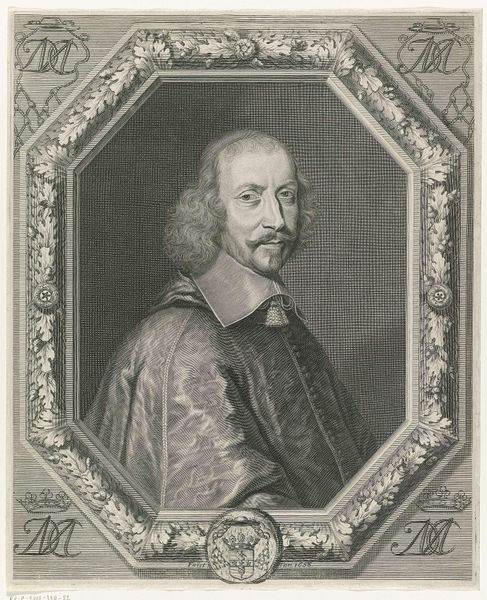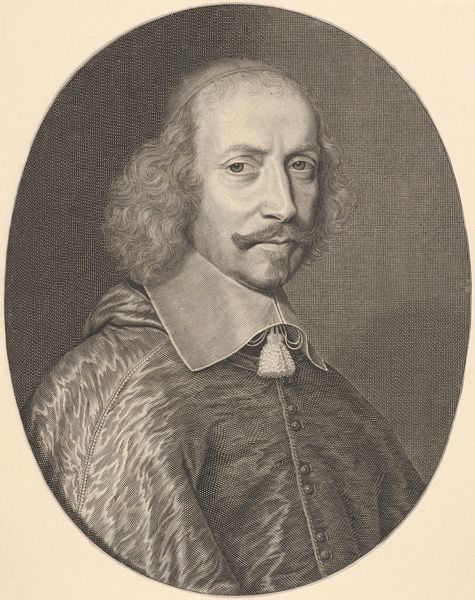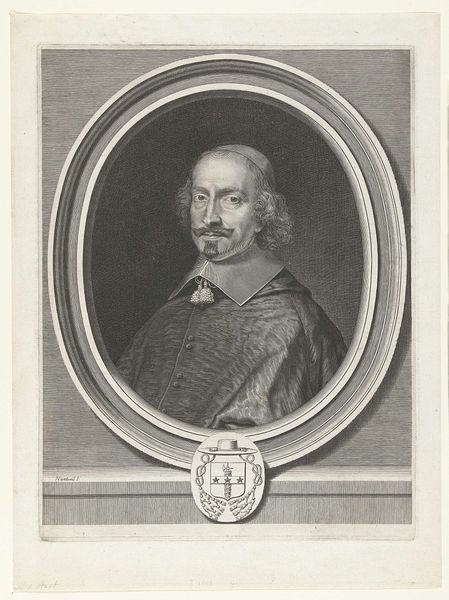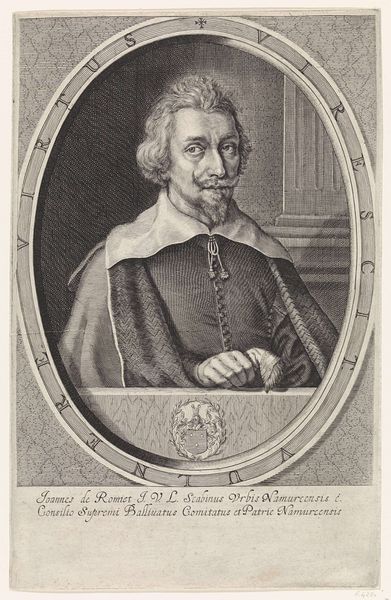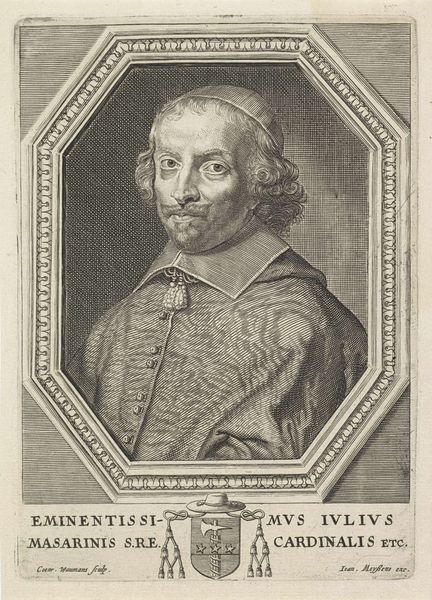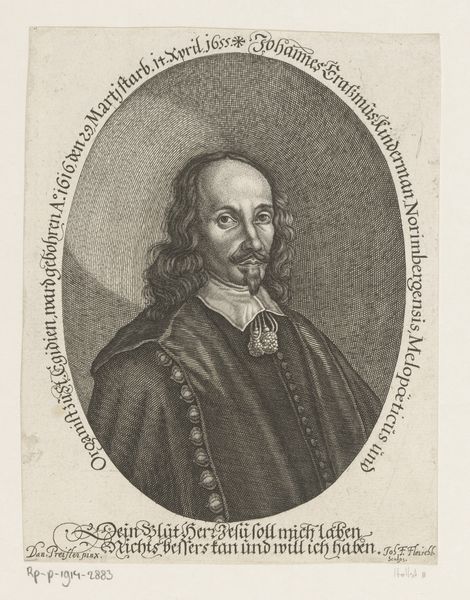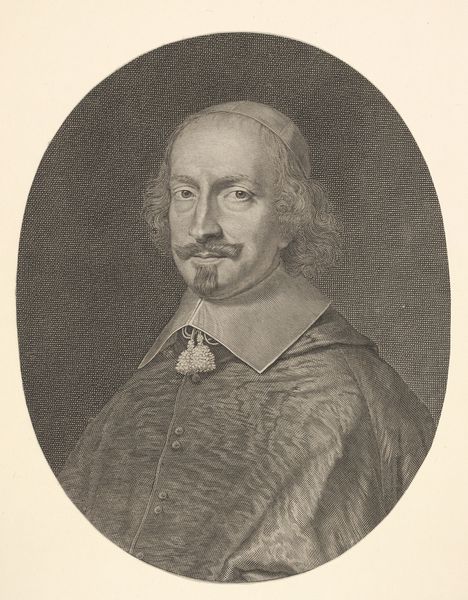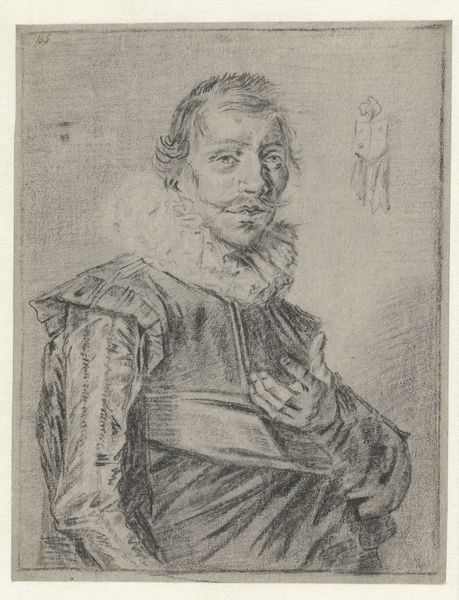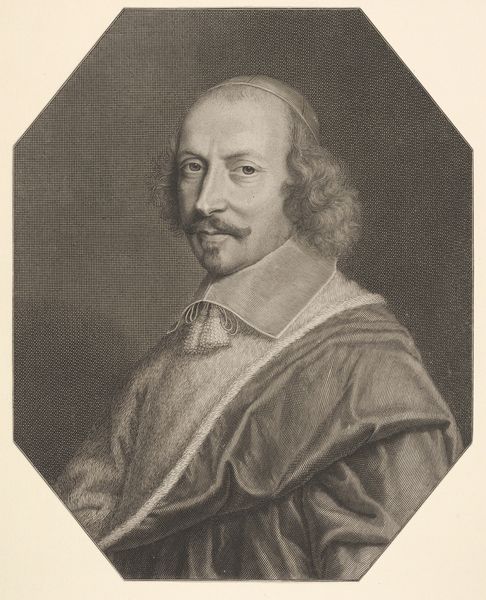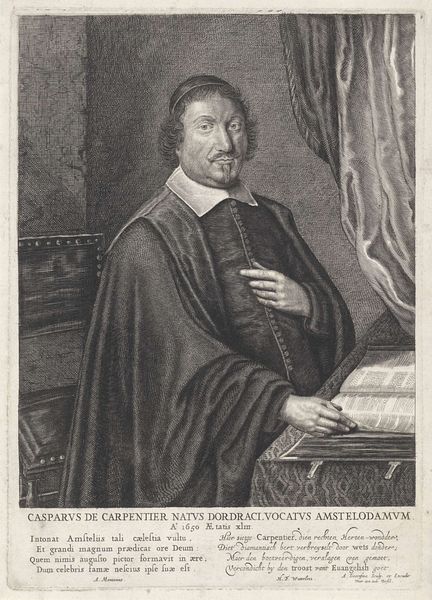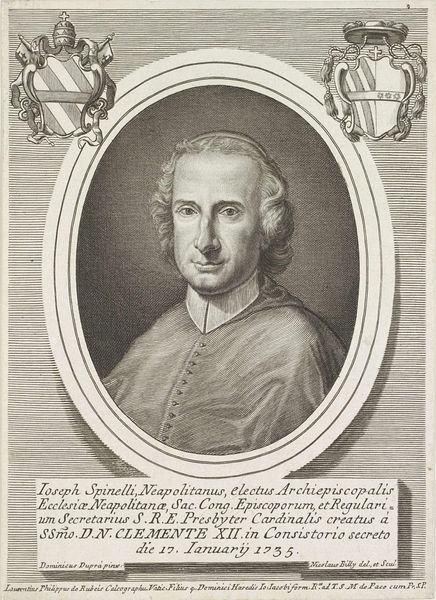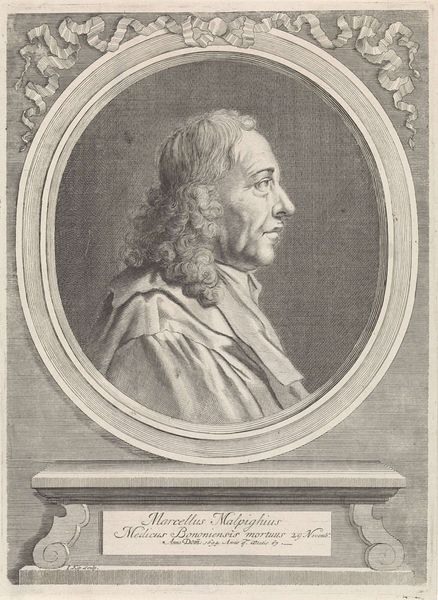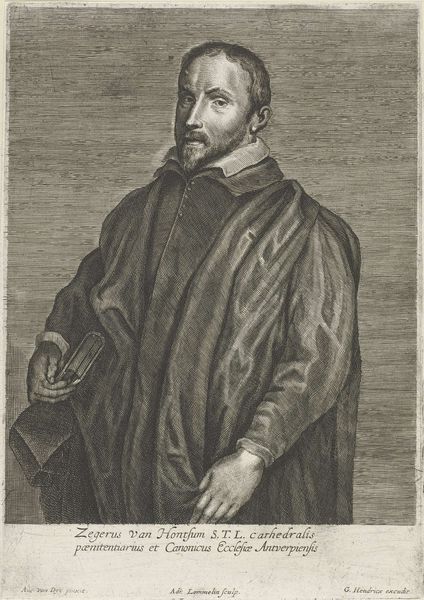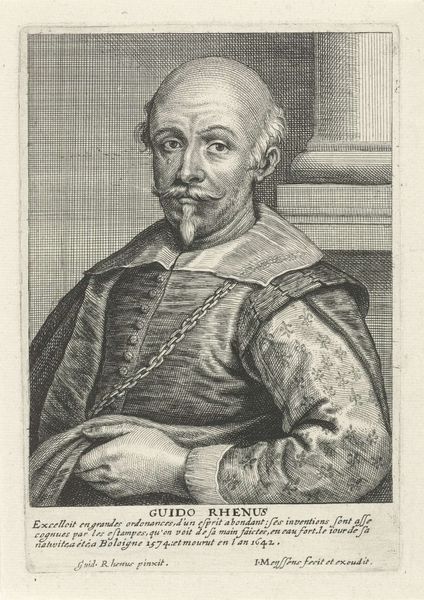
print, engraving
#
portrait
#
baroque
#
portrait image
# print
#
old engraving style
#
figuration
#
line
#
history-painting
#
engraving
Dimensions: height 249 mm, width 188 mm
Copyright: Rijks Museum: Open Domain
Editor: Here we have a print titled "Portret van kardinaal Giulio Raimondo Mazarino," dating roughly between 1602 and 1652. It appears to be an engraving, which gives it this incredible linear quality. The details in his robes are remarkable. What strikes me most is the evident labour involved in its creation – all those meticulously etched lines! What do you make of it? Curator: It's fascinating to consider the means of production. An engraving like this wasn’t simply about replicating an image; it was a translation of power and status into a commodity. Look at the materials – the paper, the ink, the metal plate used to create it. These were all resources embedded in a complex web of patronage and consumption. How does this accessibility challenge notions of Baroque art as inherently elite or exclusive? Editor: That's a really interesting point! I hadn't considered the wider distribution of printed portraits. Does the choice of engraving, as opposed to painting, make a statement about Mazarino’s desired image, then? Curator: Absolutely. Engravings allowed for wider circulation. So we see how portraiture served the political and economic aims of those commissioning it. By making it a printed multiple, it allowed those with power to literally disseminate images of themselves for social and political purposes. Notice, also, the inscription. How does that further bolster our understanding? Editor: The inscription certainly emphasizes Mazarino's title. I see how the print operates as both a work of art and a form of political propaganda, skillfully distributed. Thanks! Curator: And the production of these portraits allowed printmakers to establish workshops, where art, labor, and economic means converged. It gives one a lot to consider when seeing such works in a museum today!
Comments
No comments
Be the first to comment and join the conversation on the ultimate creative platform.
